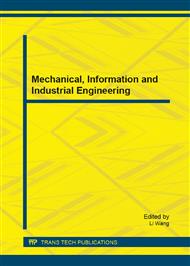p.186
p.191
p.196
p.201
p.206
p.211
p.218
p.225
p.229
Stability Control of 4WD Electric Vehicle with In-Wheel Motors Based on Integrated Control of Electro-Mechanical Braking System
Abstract:
Each wheel torque can be controlled independently, so four-wheel-drive electric vehicle can not only control the vehicle stability through hydraulic braking pressure regulation, but also through controlling the motor driving and braking force to generate yaw moment, which are different with the conventional vehicles. 4WD Evs have potential applications in control engineering. Both in-wheel motors and the EHB are actuators for vehicle stability control. In this paper, a vehicle co-simulation platform is constructed through the application of AMEsim and Simulink, additionally, a fuzzy controller is designed to generate yaw moment so as to compensate for deviations between CG slip angles and yaw rate. The simulation results show that the stability control system with motors and a mechanical load brake system can effectively improve the handling stability of the vehicle.
Info:
Periodical:
Pages:
206-210
Citation:
Online since:
March 2015
Authors:
Price:
Сopyright:
© 2015 Trans Tech Publications Ltd. All Rights Reserved
Share:
Citation:


